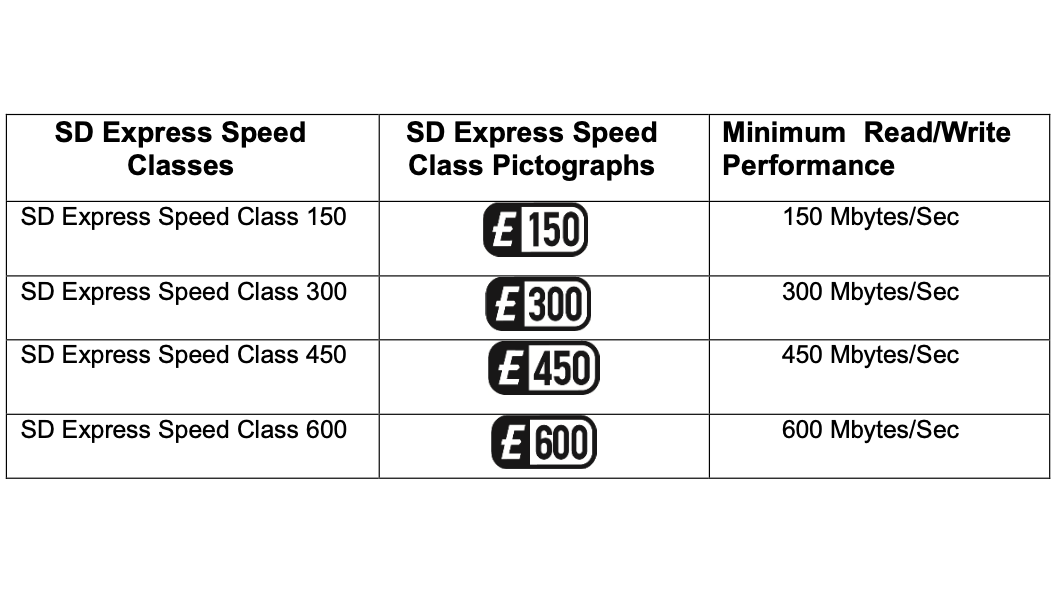Dead and buried already? The latest SD card standard is fast but flawed
The SD Association announces SD cards capable of a MINIMUM 600MB/s, but we doubt you’ll ever be able to buy one

It'd be easy to assume CFexpress is now the ultimate memory card format, with the rival SD standard left languishing in the low- to mid-range card market. But this isn't entirely true, as the SD format is quietly attempting to cling on to the high-end sector as well. It's doing this through the SD Express standard, which adopts similar PCI Express and NVMe specifications as used by CFexpress. In its fastest guise, utilising a PCIe Gen.4 x 2 lane interface, an SD Express card is theoretically capable of a 3940MB/s transfer speed. Compare this to the comparatively sluggish 312MB/s max speed of an existing UHS-II SD card and the new format performs well, on paper at least.
Now the SD Association has released another formal SD Express specification update. This latest version 9.1 spec adds separate Speed Class ratings to differentiate the performance of upcoming SD Express cards. The new SD Express Speed Class 150, 300, 450 and 600 ratings are similar in essence to the V30, V60 and V90 ratings on current SD cards, as they denote the minimum sustained write performance that the card should be capable of – 150MBs, through 600MB/s. Consequently a Class 600 card may be capable of even faster peak performance in the right circumstances.
The newly announced 9.1 specification also doubles the theoretical maximum speed of microSD Express cards, from the 985MB/s in the previous version 8.0 standard to 1969MB/s in version 9.1, by using the PCIe Gen4 x1 lane interface.
All very impressive, but there is a fairly sizable elephant in the room here. Despite the SD Express standard being released in mid 2018 and upgraded several times since, as of October 2023 there are still NO cameras that support SD Express cards. This isn't really surprising, as while a couple of card manufacturers – ADATA , and RitzGear - have announced SD Express cards, in every current device you'll actually be able to use them in they'll only operate at UHS-I speed, making them slower in the real world than an existing UHS-II SD card. And it's not just a lack of SD Express cards in the retail market that will discourage camera manufacturers from supporting the format. With CFexpress already offering similar performance, and now with mature retail availability, do we even need a second high-end memory card format like SD Express?
It's perhaps ironic that the most ubiquitous memory card format in history now finds itself as the up-start underdog, at least in the premium sector, but that's the way things currently stand for SD Express: the most impressive iteration of the SD card, but one which looks destined to be a non-starter.
Read more:
- The best memory cards for your camera - SD, microSD, CF and XQD
- Best CFexpress cards
- Best CFast cards
- Best memory card readers
- Best flash drives
- The best monitors for photographers
- Best SD card deals
- Best laptops for photo editing
The best camera deals, reviews, product advice, and unmissable photography news, direct to your inbox!
Ben is the Imaging Labs manager, responsible for all the testing on Digital Camera World and across the entire photography portfolio at Future. Whether he's in the lab testing the sharpness of new lenses, the resolution of the latest image sensors, the zoom range of monster bridge cameras or even the latest camera phones, Ben is our go-to guy for technical insight. He's also the team's man-at-arms when it comes to camera bags, filters, memory cards, and all manner of camera accessories – his lab is a bit like the Batcave of photography! With years of experience trialling and testing kit, he's a human encyclopedia of benchmarks when it comes to recommending the best buys.



